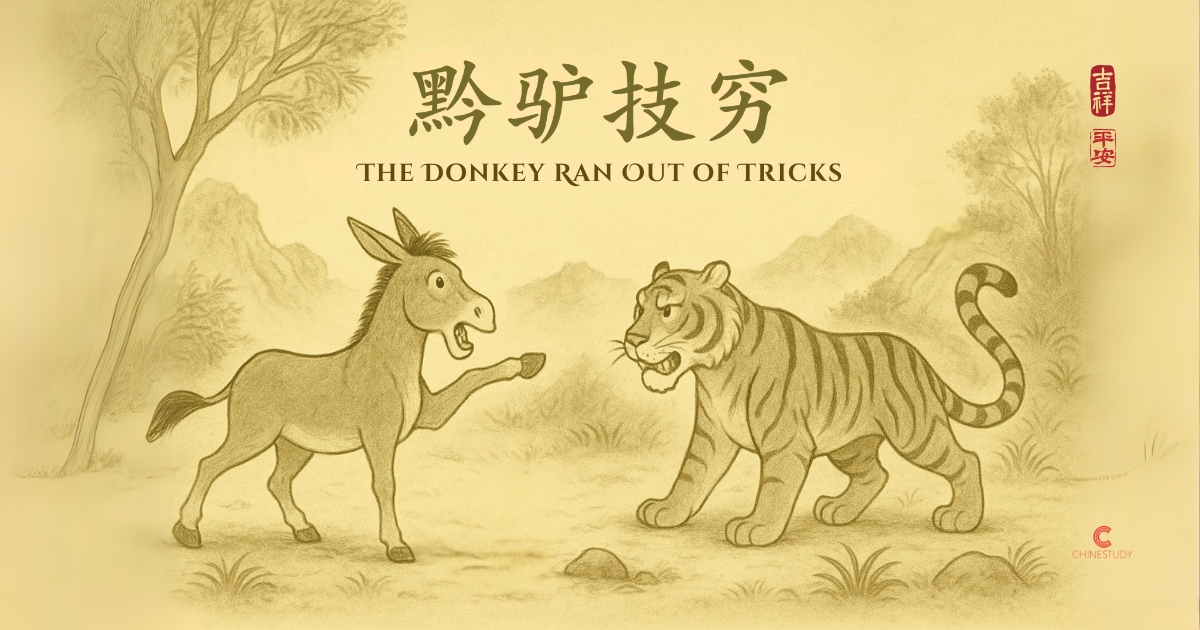
🫏 黔驴技穷 qián lǘ jì qióng – The Donkey Ran Out of Tricks
Discover the idiom 黔驴技穷 — a story about a donkey, a tiger, and the moment when someone runs out of tricks. This post includes the full story, real examples, and practice for Mandarin learners.
Continue reading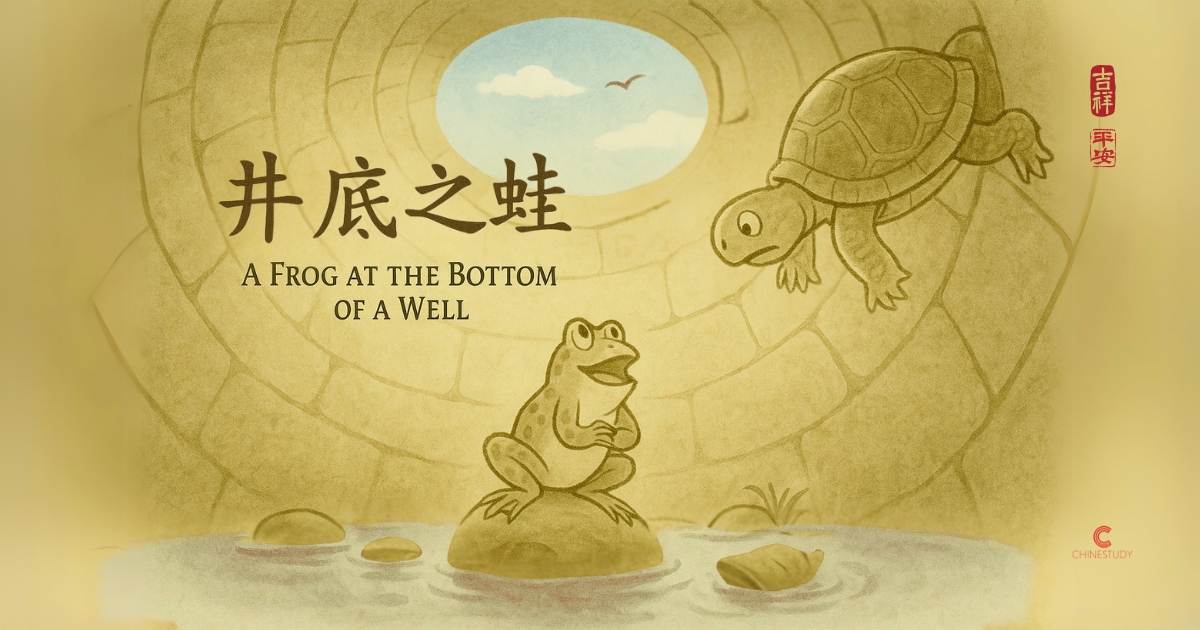
🐸 井底之蛙 jǐng dǐ zhī wā – A Frog at the Bottom of a Well
Discover the story of a proud frog and a vast ocean beyond its imagination. 井底之蛙 teaches us what happens when we mistake a small world for the whole world. Includes examples and a memory tip for learners.
Continue reading
🐅 调虎离山 diào hǔ lí shān – Luring the Tiger Out of the Mountains
This ancient Chinese idiom reveals a clever strategy: lure a threat away from its stronghold to create a safer path forward. Learn the meaning, story, and how to use it — with examples and a memory tip.
Continue reading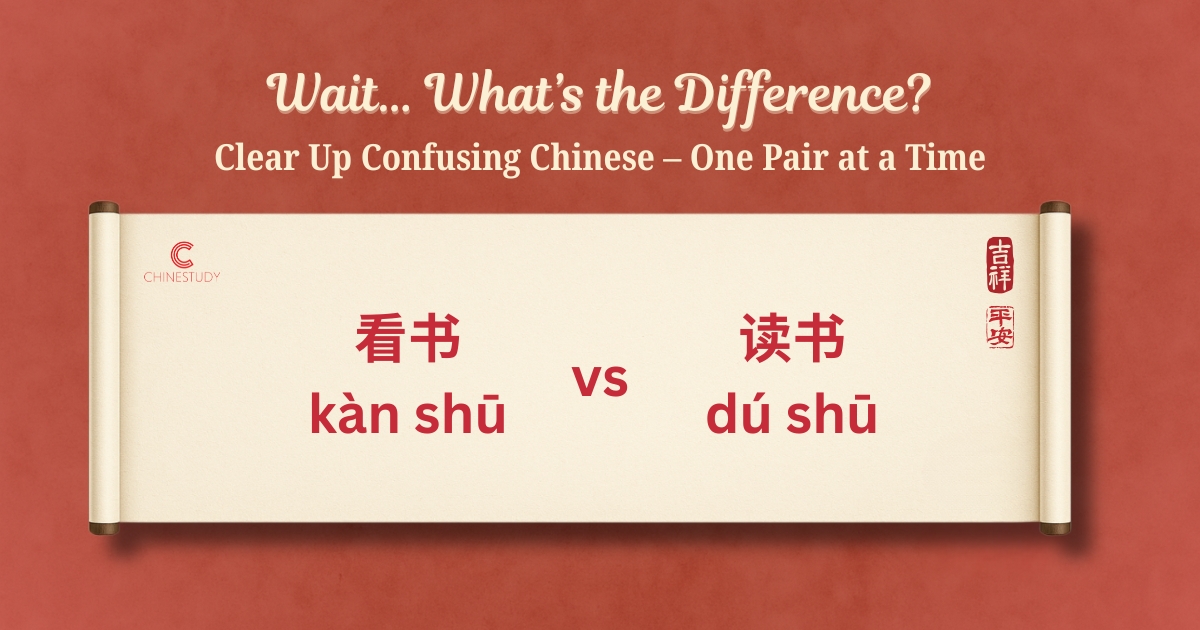
🧐 看书 kàn shū vs 读书 dú shū – What’s the Difference?
Think 看书 and 读书 mean the same thing? Not quite! Learn when to use each one — whether you’re reading for fun or studying hard. This post has clear examples, common mistakes, and a quick quiz to test yourself! 📚✅
Continue reading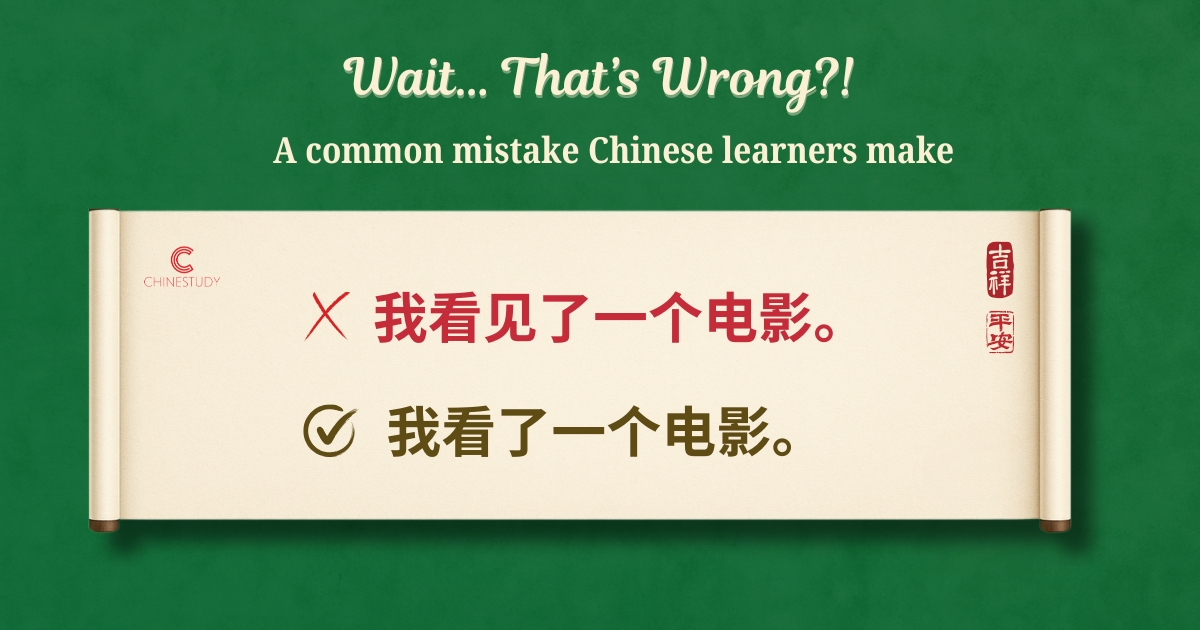
😅 我看见了一个电影。Wait… That’s Wrong?!
Saying “我看见了一个电影” to mean “I watched a movie”? It’s a common mistake! Learn the difference between 看 and 看见 — with clear examples and fun practice.
Continue reading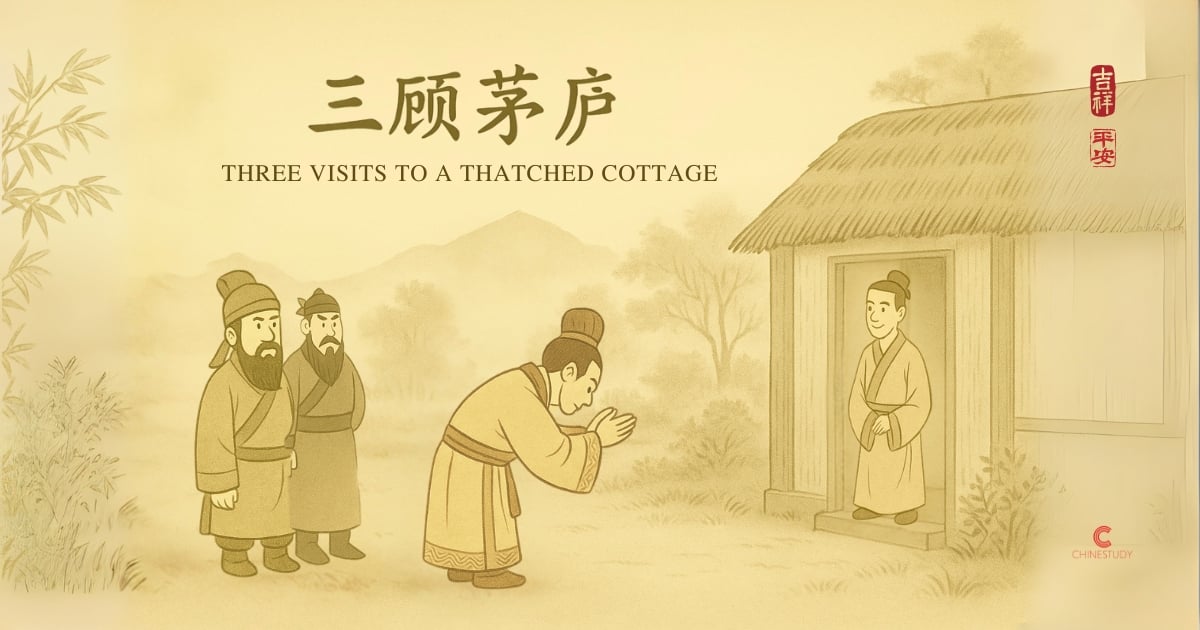
🛖 三顾茅庐 sān gù máo lú – Winning Trust Through Sincerity
Learn the meaning and story of 三顾茅庐, an idiom about how humility, patience, and sincere effort can win respect and open doors. Real examples and a memory tip included!
Continue reading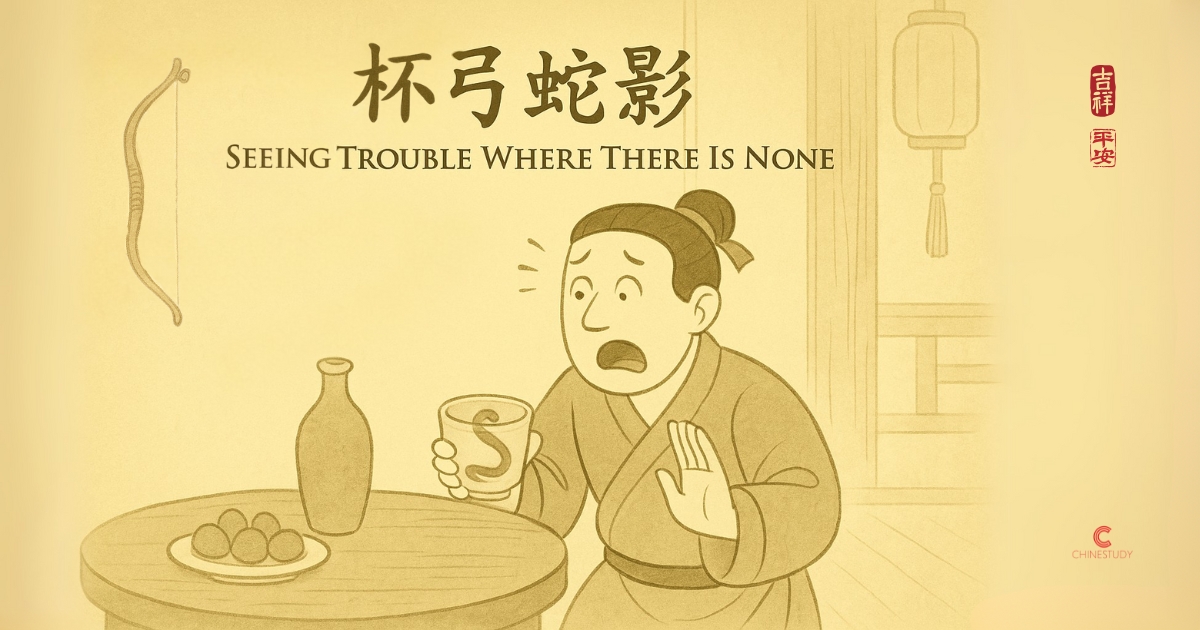
🐍 杯弓蛇影 bēi gōng shé yǐng – Seeing Trouble Where There Is None
Discover the story and meaning of 杯弓蛇影 — an idiom about mistaking shadows for danger. Learn how fear can trick the mind, with simple examples and a fun memory tip.
Continue reading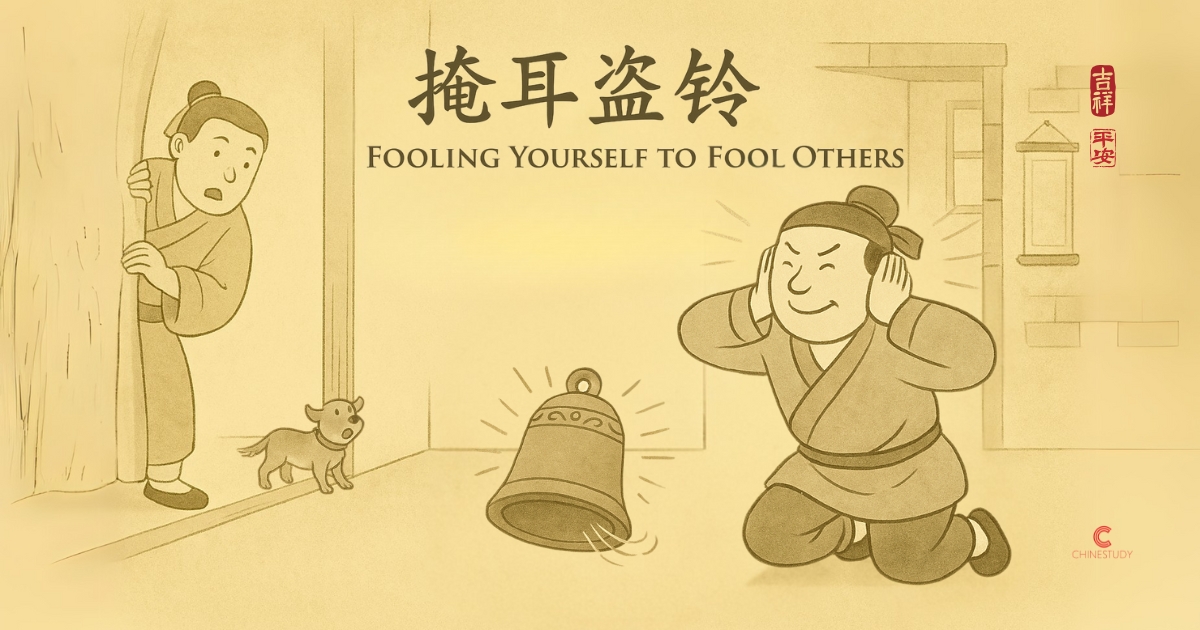
🔔 掩耳盗铃 yǎn ěr dào líng – Fooling Yourself to Fool Others
Discover the story and meaning of 掩耳盗铃, a Chinese idiom about deceiving yourself to hide the truth. Includes real examples and a vivid memory tip.
Continue reading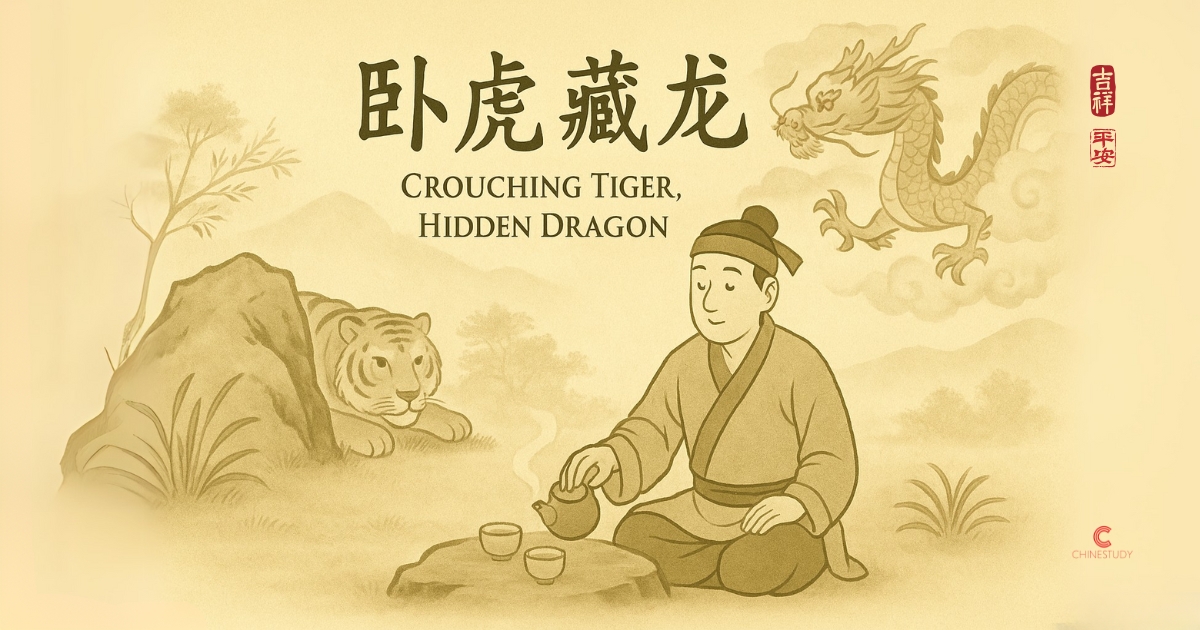
🐯🐉 卧虎藏龙 wò hǔ cáng lóng – Crouching Tiger, Hidden Dragon
Discover the meaning and story of 卧虎藏龙, a Chinese idiom about hidden power and unseen talent. Includes examples and an easy memory tip.
Continue reading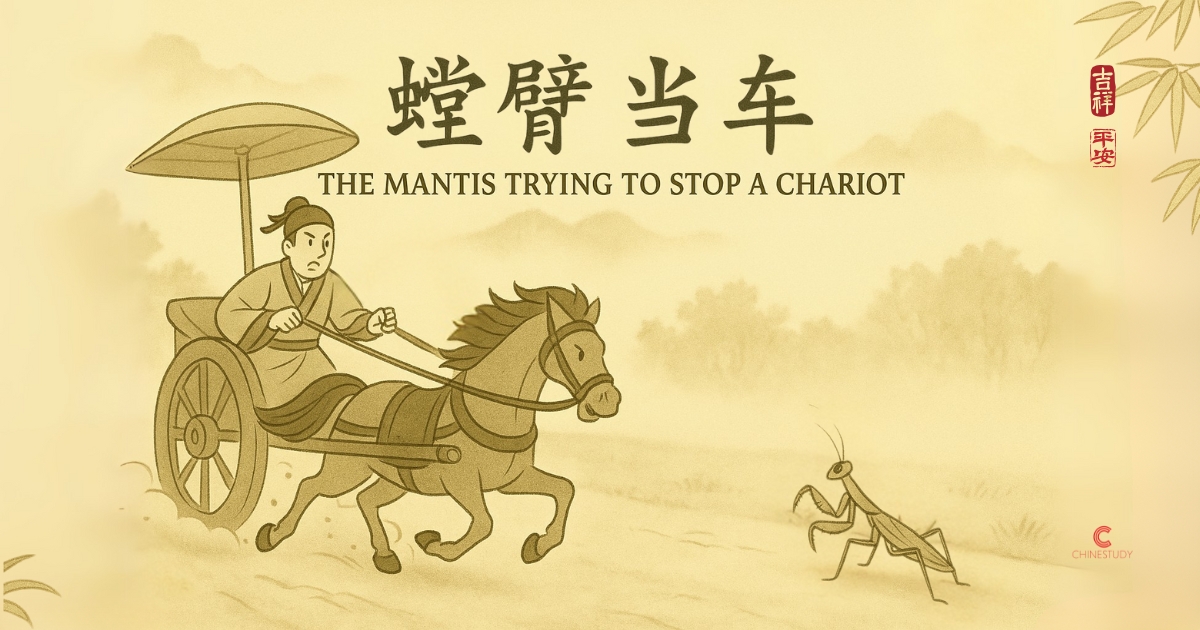
🛑 螳臂当车 táng bì dāng chē – The Mantis Trying to Stop a Chariot
Can a tiny mantis stop a chariot? Discover the idiom 螳臂当车, a vivid Chinese metaphor for overestimating yourself when facing overwhelming power. Great for learners and storytellers.
Continue reading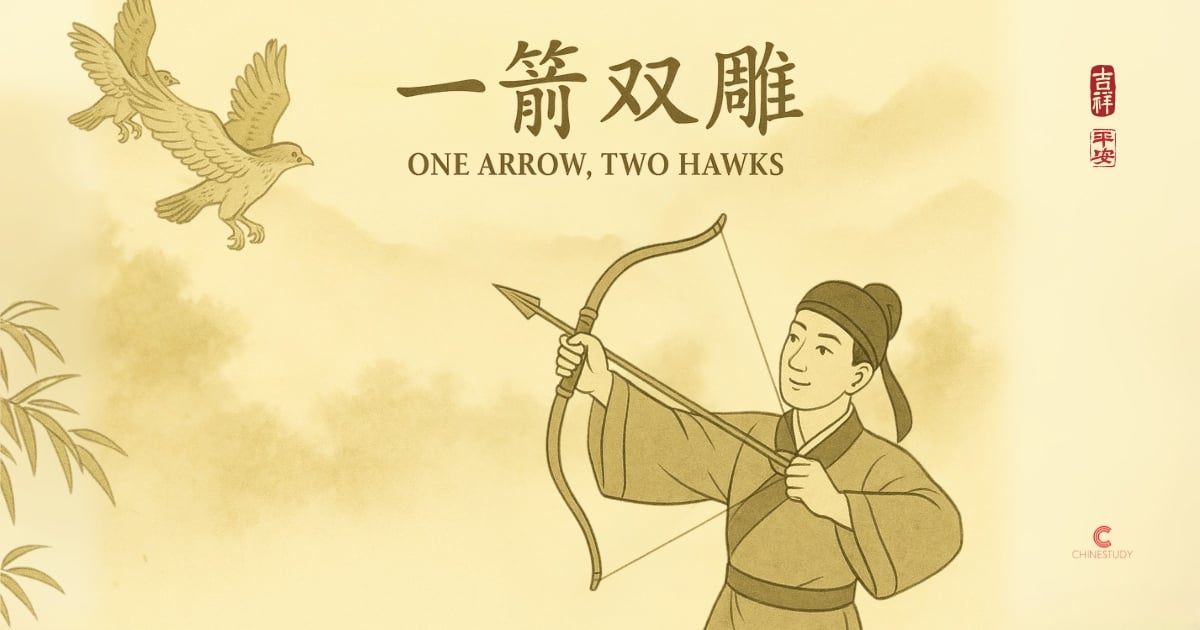
🏹 🦅 一箭双雕 yí jiàn shuāng diāo – Hitting Two Hawks with One Arrow
Learn the meaning and story of 一箭双雕, a Chinese idiom about achieving two results with one smart action. Includes real examples and an easy memory tip.
Continue reading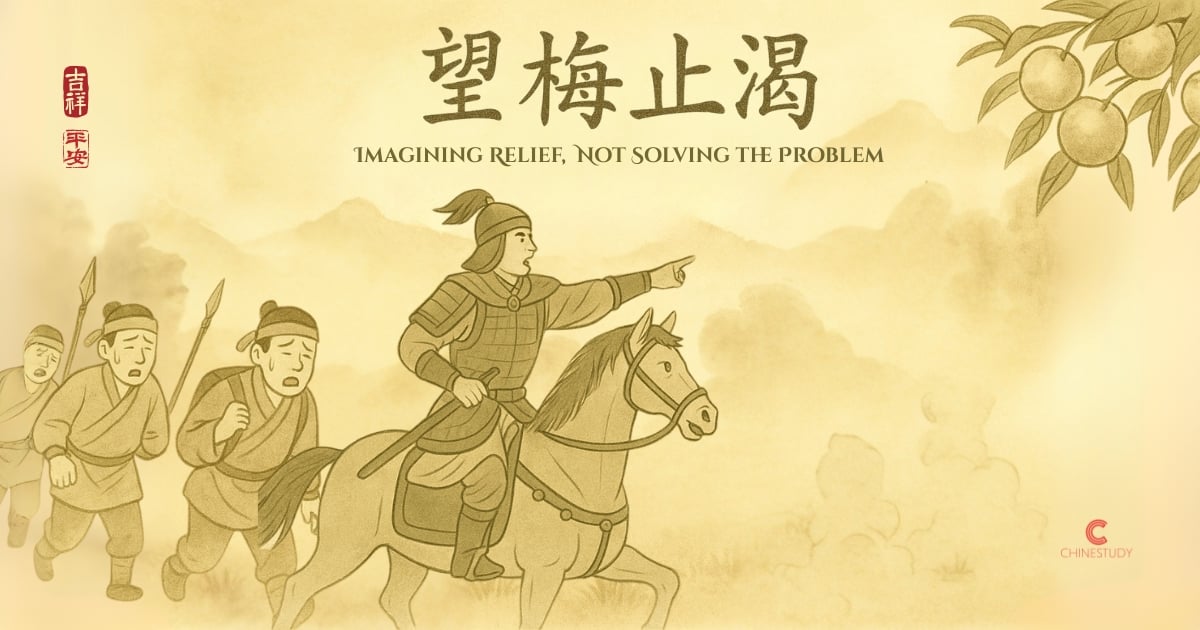
🫐 望梅止渴 wàng méi zhǐ kě – Imagining Relief, Not Solving the Problem
Discover the story of 望梅止渴, a Chinese idiom about comforting yourself with imagination instead of taking real action. Learn its meaning, origin, examples, and memory tips.
Continue reading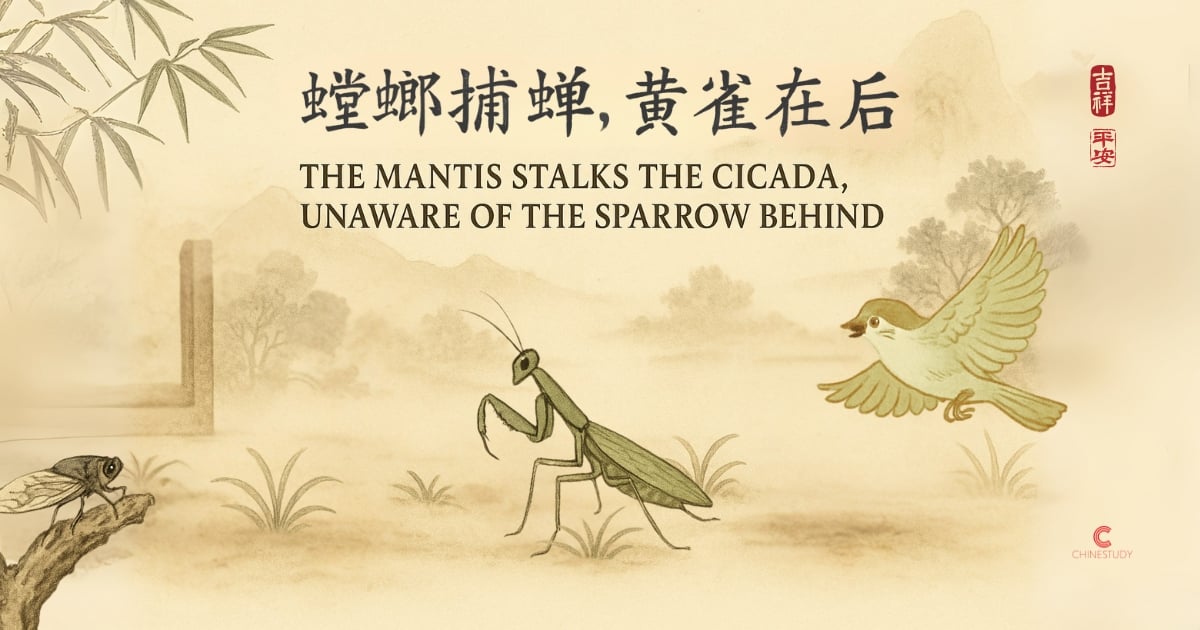
🪲 螳螂捕蝉,黄雀在后 táng láng bǔ chán, huáng què zài hòu – Focused on Gain, Blind to Danger
Learn the powerful Chinese idiom 螳螂捕蝉,黄雀在后. Discover the story of the mantis, the cicada, and the hidden danger. Includes examples, usage tips, and a visual memory trick.
Continue reading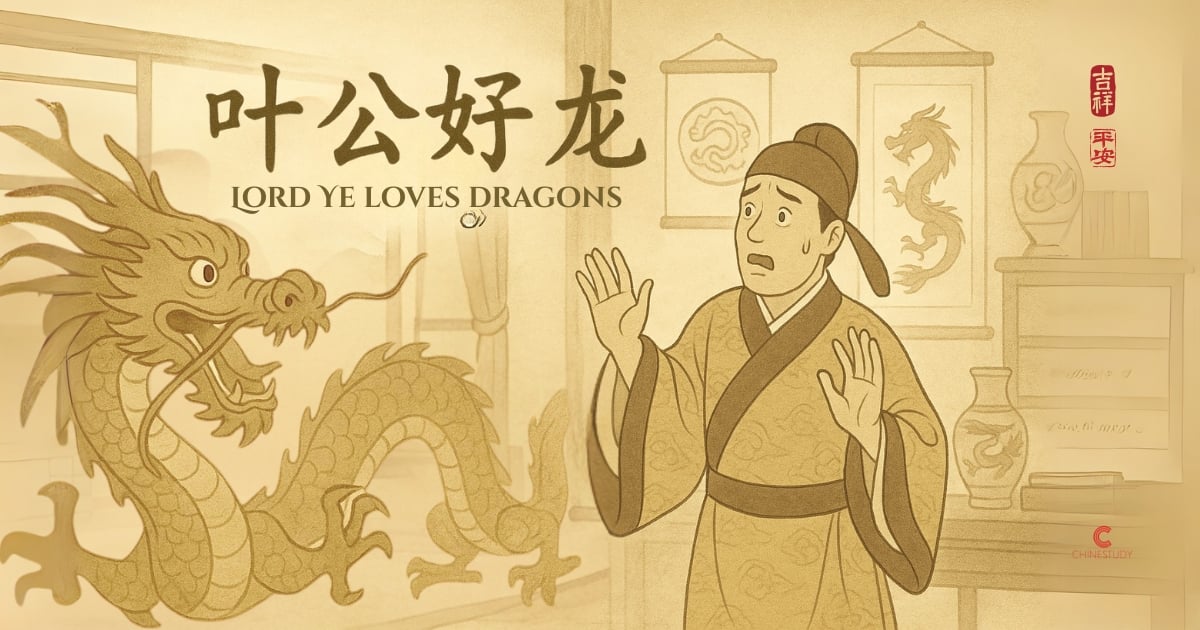
🐲 叶公好龙 yè gōng hào lóng – Loving the Idea, Fearing the Reality
Discover the story of 叶公好龙, a Chinese idiom about people who pretend to love something but avoid it when it gets real. Learn the story, meaning, and how to use it.
Continue reading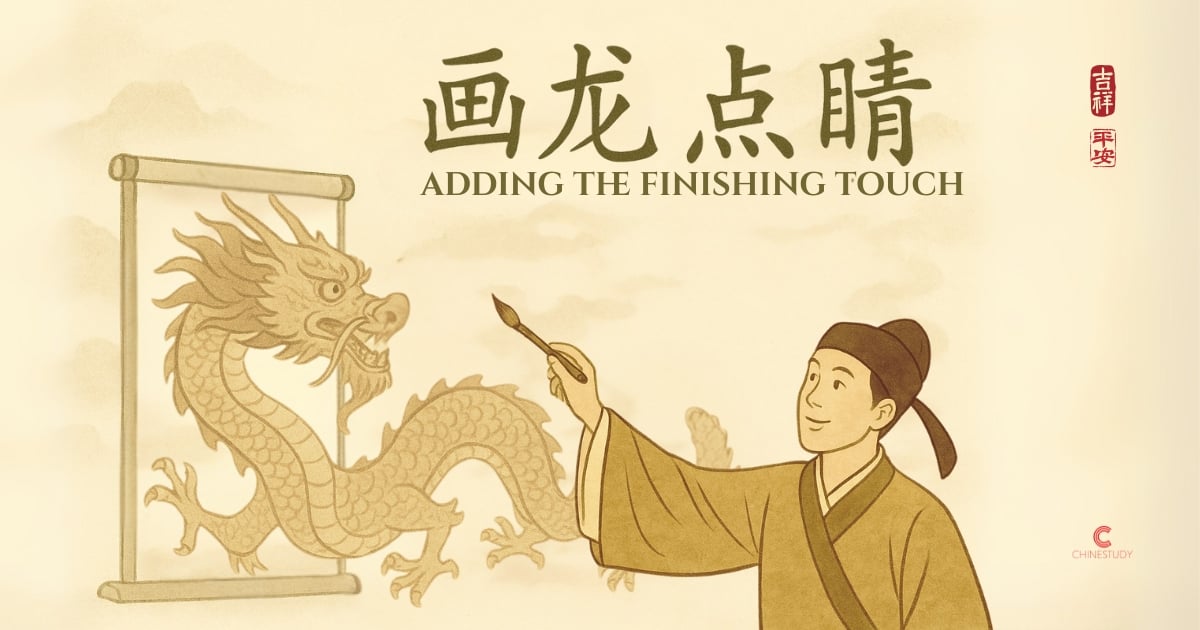
🐉 画龙点睛 huà lóng diǎn jīng – The Finishing Touch That Brings It to Life
Discover the story behind 画龙点睛, a Chinese idiom about adding the perfect final detail. Learn how a single touch can turn something good into something unforgettable.
Continue reading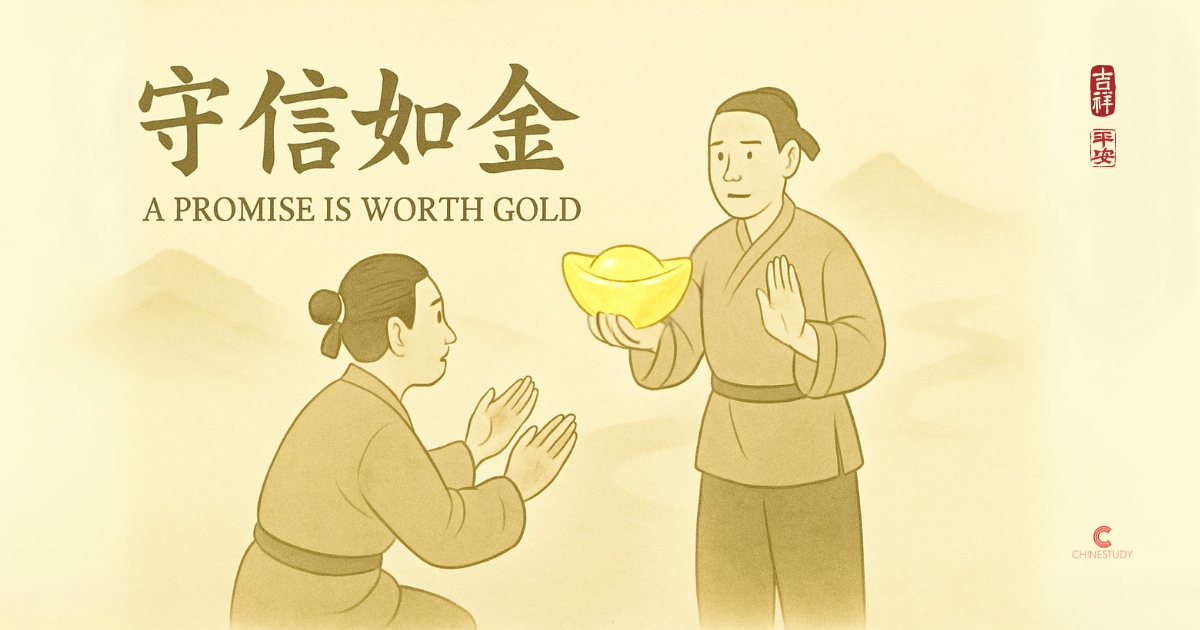
💛 守信如金 shǒu xìn rú jīn – A Promise Is Worth Gold
Discover the meaning behind 守信如金, a Chinese idiom about the value of trust. Learn how keeping your word is like holding gold—with real-life examples and cultural insight.
Continue reading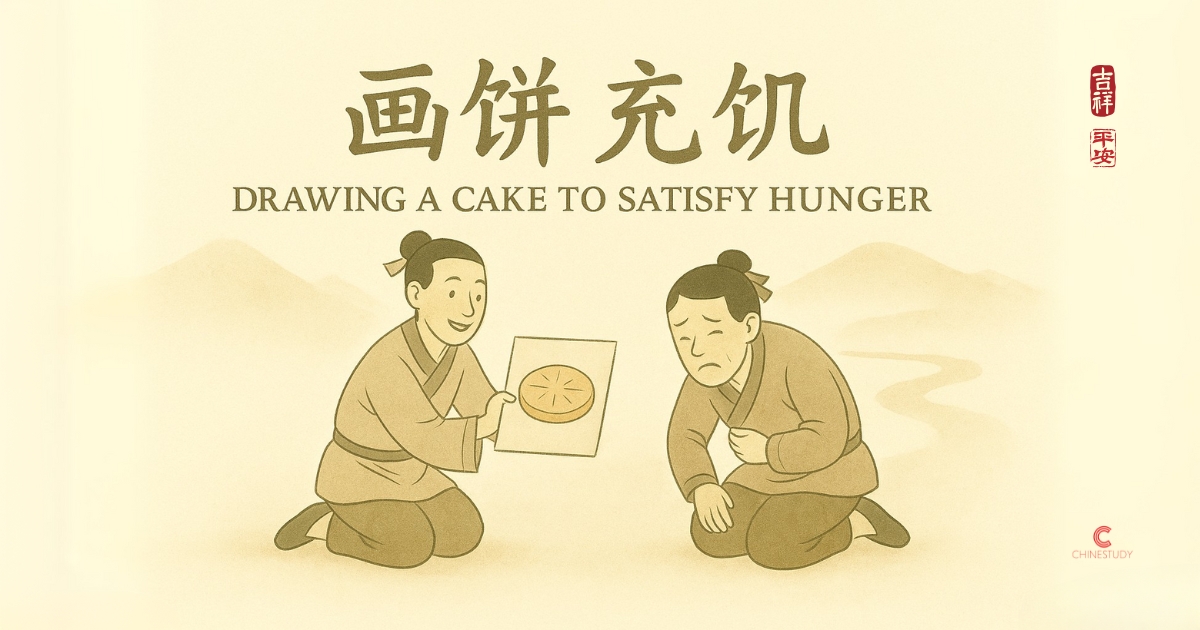
🥮 画饼充饥 huà bǐng chōng jī – Drawing a Cake to Satisfy Hunger
Discover the story behind 画饼充饥, a Chinese idiom about empty promises and false solutions. Learn its meaning, usage, and how to never fall for “just talk.”
Continue reading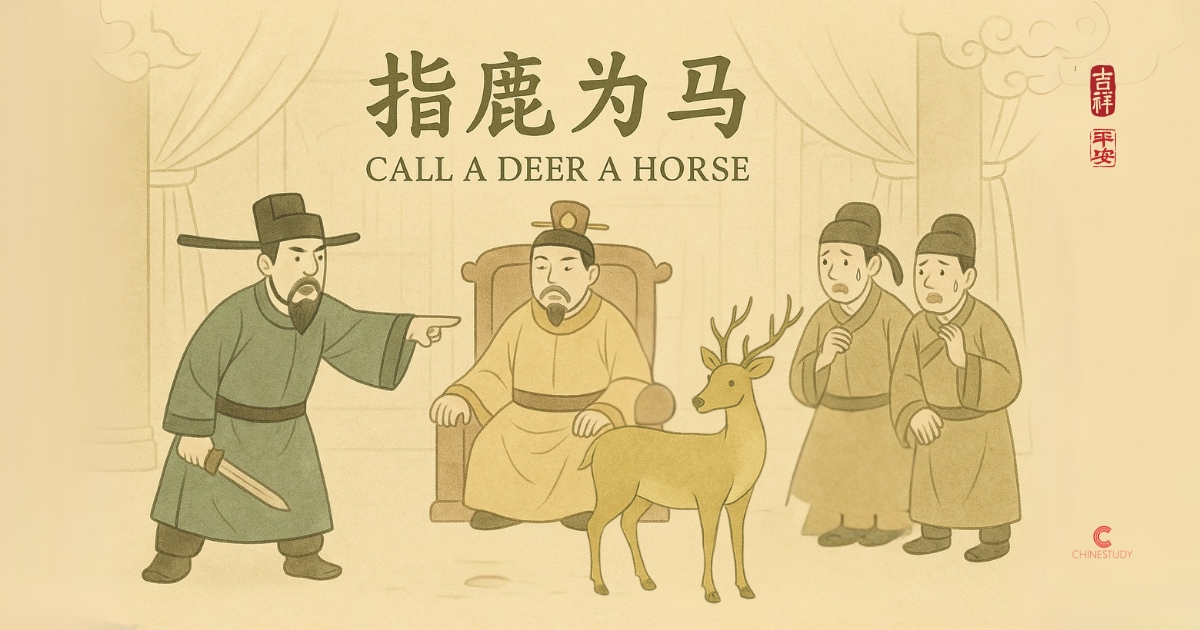
🦌 指鹿为马 zhǐ lù wéi mǎ – When Power Twists the Truth
Discover the shocking story behind 指鹿为马, a Chinese idiom about twisting the truth for power. Includes examples, usage tips, and a visual memory trick.
Continue reading